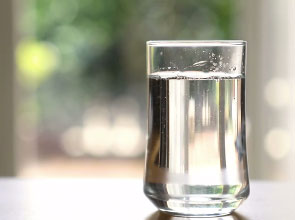Industry plays vital role in conserving our planet’s water resource
Articles EDM • Central Innovation • 1 September 2017

With 1.2billion people living in areas with little to no water, and two-thirds of the global population expected to have limited access to water by 2025, many have realised it is time to explore ways to conserve this vital resource.
According to the United Nations, water scarcity is both a natural and a human-made phenomenon. There is enough freshwater on the planet for seven billion people, but it is distributed unevenly and too much of it is wasted, polluted and unsustainably managed.
Fortunately, as awareness grows around the need to conserve water, we also see new innovations being developed to boost water supplies to those who need it most; and clever methods of reusing water to reduce our reliance on fresh water.
Mechanical product innovation
Yet despite the initial outlook, there is hope. With increased awareness of our plight, many of the world’s smartest minds are looking at ways to ensure water is accessible to future generations. Mechanical engineers like Sonam Wangchuk are discovering innovative ways to store water in dry and unforgiving climates such as the Himalayas. His ice stupas can store ice in the Himalayas during cold seasons, which can defrost and provide water during the warmer months:
Read more about this award-winning project
The WaterSeer (below) is another innovation designed to create water out of thin air. With a subterranean chamber being filled with warm outside air, condensation gathers at a rate of around 30 liters a day.

Rethinking water use in our urban environment
At present, water in highly populated areas (especially in the western world), contains more contaminants and concentrations of other materials than is desirable. As a result, many countries are developing Water Sensitive Urban Design (WSUD) guidelines which encourage innovative urban planning and design.
One of the key differentiators of this initiative from the approaches used in the past is that WSUD recognises the potential of stormwater runoff as a water resource. This has opened up numerous opportunities for industry to capitalise upon technologies which remove pollutants, protect and enhance wastewater and stormwater quality, conserve and recycle ‘grey’ water, and improve usage efficiencies.
The Auckland Council has created an in-depth directory of information to ensure new housing and urban design projects adhere to its WSUD policies, which can be viewed here.
Urban environment technologies such as biofiltration and infiltration systems, coupled with innovations in hydroponics, closed-loop irrigation and drip lines for rural applications including farming, are tackling our water resource problems head-on.
Purifying our water
Looking more like a graphic design project than a water filtration device, the Drinkable Book contains tear-off filters that eliminates 99.9% of bacteria in drinking water. Currently being distributed in Ghana, Kenya, Haiti, Ethiopia, India and Tanzania, the book also contains printed sanitation advice to further reduce waterborne diseases spreading through communities.

What’s next?
The growing awareness of the importance of environmental sustainability is set to drive change, not only in our response to the challenges of our evolving world, but in proactively innovating to create a better balance between the needs of our human population and the natural processes of our finite ecosystem. We believe the design, manufacturing and AEC industries will all play a key role in developing the innovations that will ensure the future sustainability of both our natural and human-made environments.

